This content is restricted to subscribers
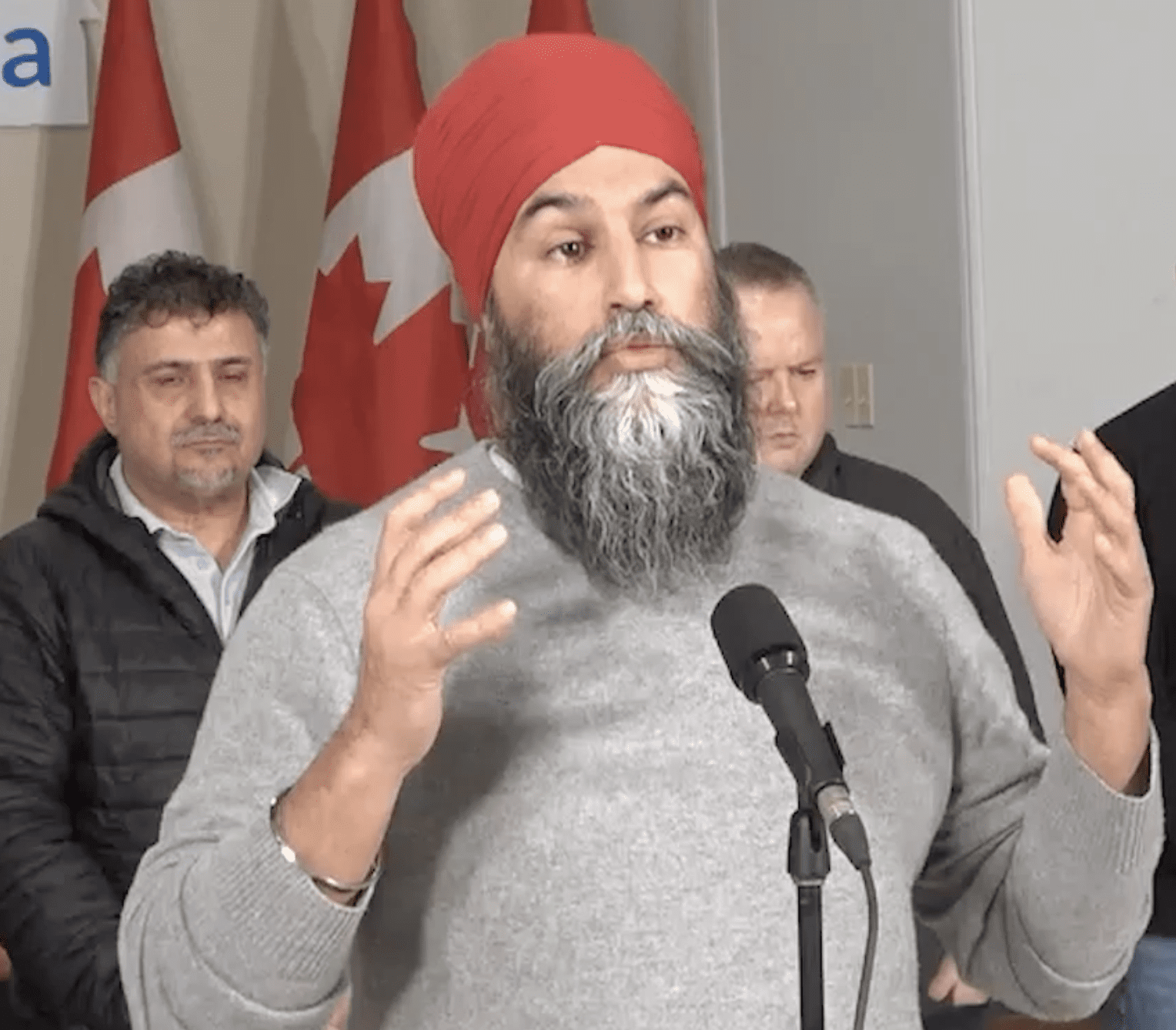
The views, opinions and positions expressed by columnists and contributors are the author’s alone. They do not inherently or expressly reflect the views, opinions and/or positions of our publication.

This content is restricted to subscribers
The views, opinions and positions expressed by columnists and contributors are the author’s alone. They do not inherently or expressly reflect the views, opinions and/or positions of our publication.
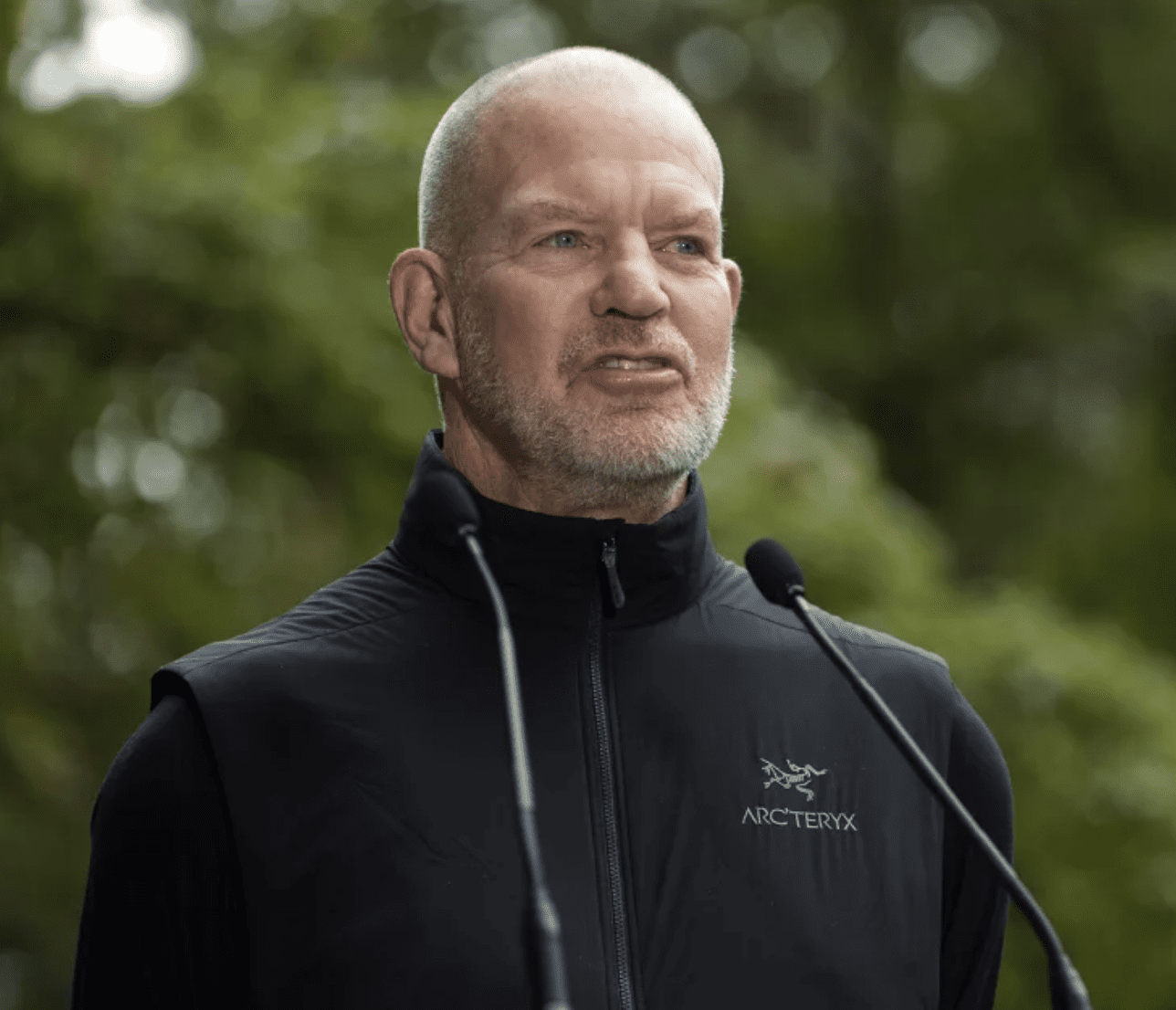
This content is restricted to subscribers
The views, opinions and positions expressed by columnists and contributors are the author’s alone. They do not inherently or expressly reflect the views, opinions and/or positions of our publication.
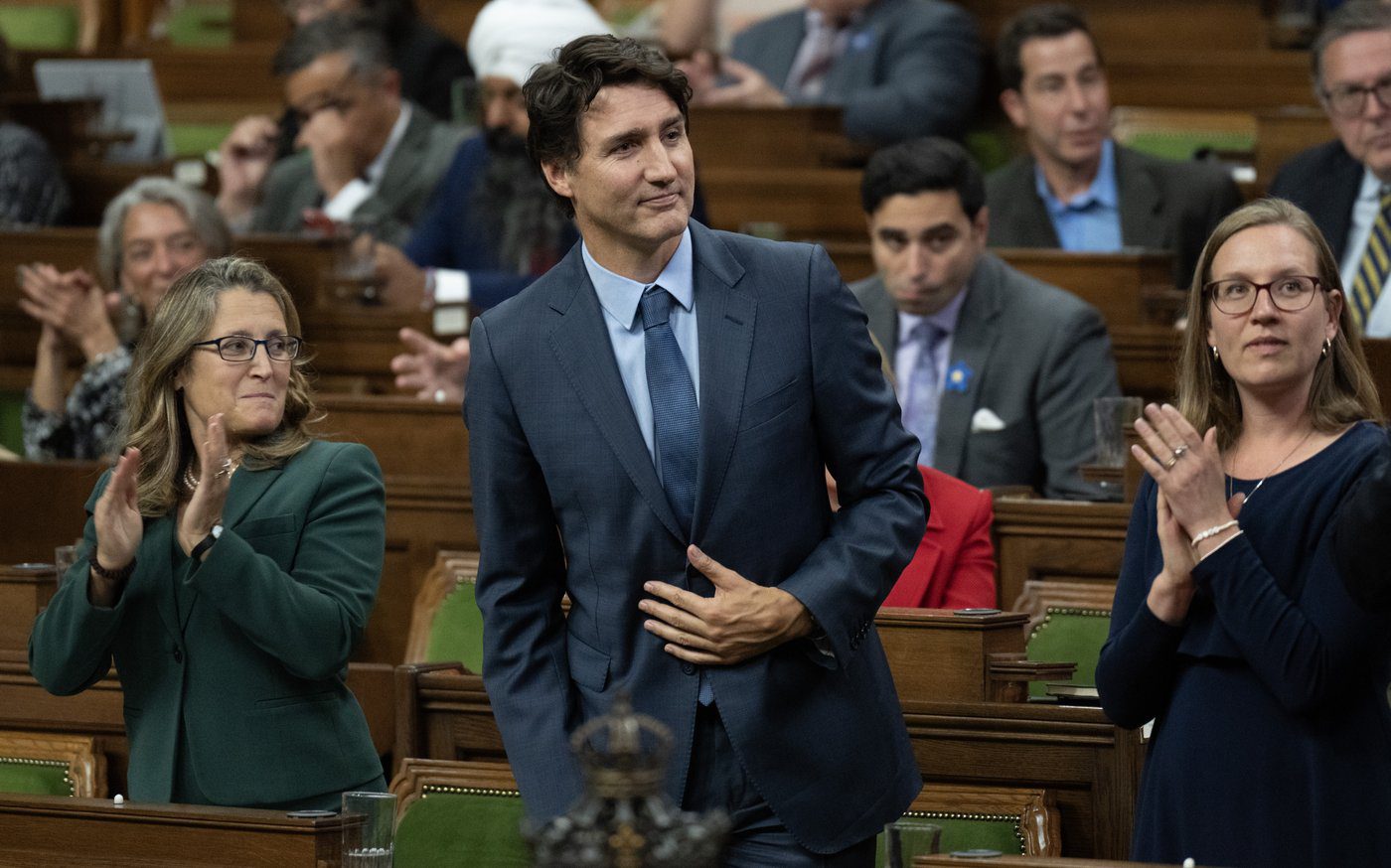
This content is restricted to subscribers
The views, opinions and positions expressed by columnists and contributors are the author’s alone. They do not inherently or expressly reflect the views, opinions and/or positions of our publication.
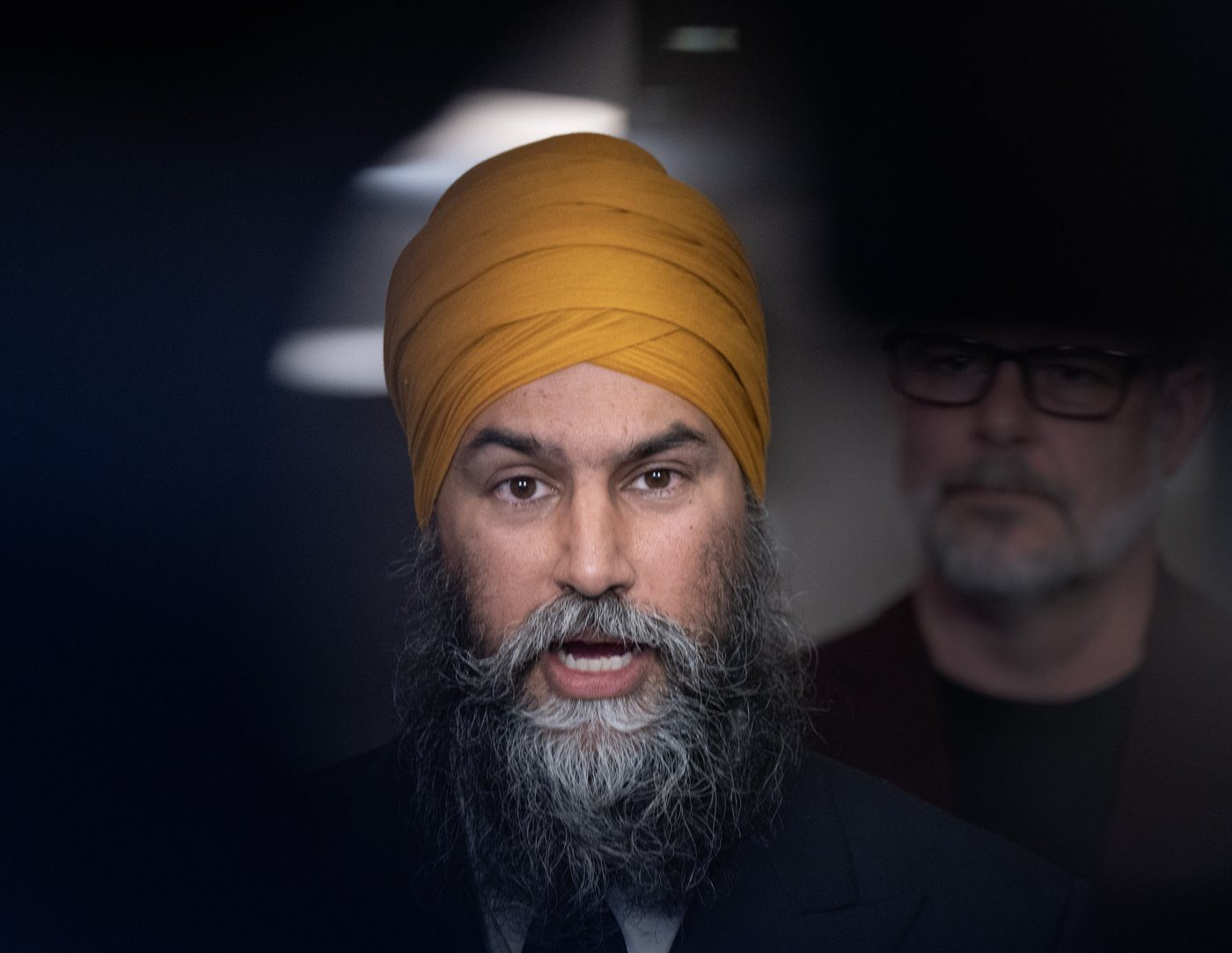
NDP leader emerged from the NDP caucus retreat in Montreal, trying to continue the “tough guy” routine that he declared “all bets are off” when the House of Commons comes back next week, and that he’s going to come in with legislation for price caps, not that it will matter because he’s already used his private members’ slot. Amidst his tough talk was a refusal to commit to continuing to support the carbon levy, claiming that he has his own plan on the way (or the “concepts of a plan” as every smartass on social media posted all day). Mere hours later, BC premier David Eby also said that he would scrap the province’s carbon price if the federal backstop were removed, because he too is apparently running scared of the BC Conservatives. While the NDP as a whole have pretty much abandoned any sense of ideological coherence in favour of more populist nonsense, Singh personally has lost any shred of credibility that he may once have held.
Singh’s intellectual bankruptcy has been on full display with the desire to renege on his agreement with the Liberals, acting in bad faith by refusing to uphold his end of a bargain that the Liberals lived up to. And yet he has tried to pivot to a message of looking to “restore hope” to Canadians when he has demonstrated that he won’t live up to his promises, and that he is fully living in a delusion that he somehow has a chance to form government during the next election, whenever that is (and while he’s full of big talk and spent the early part of the week announcing his campaign chair, the party is absolutely not ready for an election, nor do they actually want one before the “fixed” date). In no possible world is he “running to be prime minister” (which is in and of itself taking a cue from Pierre Poilievre), and pretending that he’s a contender while he tries to avoid a Nick Clegg-like decimation makes him look even more ridiculous than he already does.
What kind of “hope” does he think he’s offering if he’s “ripped up the agreement” (as he said tens of times) if he couldn’t even wait long enough for the pharmacare legislation to actually pass the Senate, and for an agreement with any of the provinces to actually be negotiated? Talk is cheap, as are promises, and implementation is always the sticking point, and the NDP have demonstrated time and again that they are willing to walk away from a deal before implementation has actually happened. (This happened with Jack Layton’s much-vaunted deal with Paul Martin). If his only policy wins are dental care and anti-scab legislation, then he should probably hold off on the applause because he and his point man on the file, Don Davies, insisted on a fully-federal program that is essentially just the federal government paying Sun Life to administer the program, which makes it extremely vulnerable to a future government simply scrapping the program. That sound so very hopeful, doesn’t it?
And then there’s the carbon levy. Singh has been somewhat non-committal about it for years now, but has consistently voted against Conservative motions to scrap it because they were supporting the Liberals against this kind of mischief. Nevertheless, it is indicative of more of his particular magical thinking because he thinks that there can be some form of climate action that won’t impact ordinary consumers or households. While the NDP had previously championed some form of cap-and-trade, Singh insists that he will have a new plan at some future date, which doesn’t exactly have the ring of credibility. If there’s any irony in this, the federal system was almost entirely patterned on the system developed for the NDP in Alberta during Rachel Notley’s government, albeit with a more generous rebate system (as the Alberta system recycled the revenues in slightly different ways). But no matter what system is proposed, there will still be an impact on consumers and households, no matter how much they dress it up as sticking it to big corporations, because costs are always passed along. The benefits of the existing levy are that it’s transparent, and that the rebates have an element of progressivity because eight out of ten households are getting more back than they spend, and it benefits the lowest income earners the most.
Let’s be clear—the Liberals opened the doors to the dooming the carbon levy when they granted the heating oil exemption for the sake of political expediency rather than simply offering a more enriched rebate to deal with the energy poverty of regions that rely on it as they worked to phase its use out. The fact that they did a shite job in explaining the carbon levy didn’t help either (and no, the media was never going to help explain it even though the Liberals keep deluding themselves into believing that will happen), and calling the rebate the “climate action incentive” was pretty much them shooting themselves in the foot. But again, anything the NDP does eventually propose will be more costly and less effective, and will delay climate action even longer when we’re already feeling the effects disproportionately, whether it’s with melting permafrost, forest fires, droughts on the prairies, or more extreme weather. Instead, they are taking the dishonest, populist route, and deserve to be called out for it.
As if this wasn’t bad enough, and it should be disqualifying, Singh’s plans for price caps on certain grocery items are pure fantasy. Consumer protection is a provincial power, and Canada isn’t France, and there is no Green Lantern ring that will let him bypass federalism if he just applies enough willpower. The lack of willingness to do what needs to be done on climate change and his complete and utter delusion elsewhere has certainly reinforced the notion that there are few, if any, good options in the next election, which just hurts everyone and damages democracy.
The views, opinions and positions expressed by columnists and contributors are the author’s alone. They do not inherently or expressly reflect the views, opinions and/or positions of our publication.
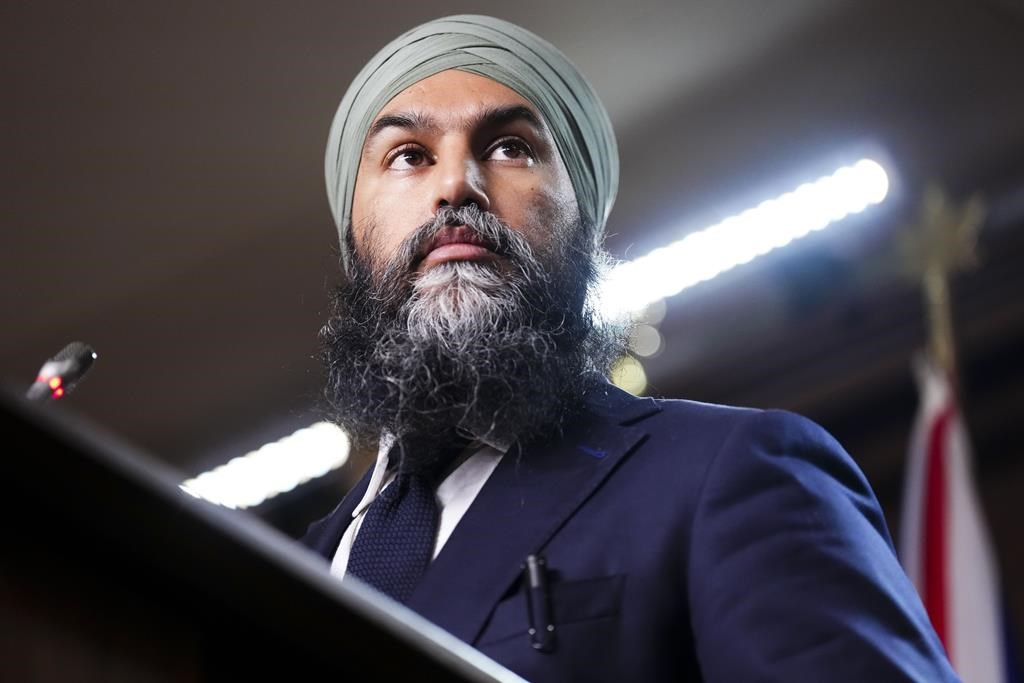
At first glance, Jagmeet Singh’s decision to pull out of the Supply and Confidence agreement with the Liberals is a hard blow for Justin Trudeau. His government finds itself in a position of instability while the Liberal Party is at its lowest in the polls.
The ending of the Liberal-NDP alliance has been part of the conversation ever since the deal was signed in March 2022. This was also emphasized within the NDP ranks: “Leaving the agreement has always been and will always be on the table for Jagmeet Singh,” stated NDP Deputy Leader Alexandre Boulerice a few days ago.
In the fall of 2022, Jagmeet Singh was already threatening to break the agreement if the government did not find solutions to the children’s health care crisis. At last fall’s convention in Hamilton, NDP delegates voted unanimously for a resolution stating that the NDP would withdraw from the agreement if the Liberals did not deliver on pharmacare. Since the signing of the agreement, the Liberals have missed several deadlines that could have allowed the NDP to withdraw its support. Each time, the NDP preferred to buy time, sometimes even by raising the stakes.
So why now?
The measures provided for in the agreement were adopted and implemented, perhaps more slowly than the NDP would have liked. Still it is difficult for the NDP to claim that the Liberal Party stopped delivering on the agreement during the summer months.
Several NDP MPs were unhappy with the Trudeau government’s recent decision to impose binding arbitration to end the rail dispute. The party’s labour critic, Matthew Green, said there would be “difficult discussions” at the caucus retreat. By taking the lead, Jagmeet Singh avoided this umpteenth discussion on the future of the agreement.
A few days prior, Pierre Poilievre challenged Jagmeet Singh on the issue. “Canadians cannot afford another year of Justin Trudeau.” He invited Jagmeet Singh to fire Prime Minister Trudeau, accusing the NDP leader of being a sellout.
It’s hard to believe that Pierre Poilievre convinced the NDP by using such inflammatory rhetoric. In truth, the Conservative Party wanted to remind voters of the close association between the Liberals and the NDP. Orange-blue swing voters, the ABL type, Anybody but Liberals, are particularly numerous in the western provinces.
And many of them will get to vote on September 16, in a by-election in the riding of Elmwood-Transcona in Manitoba, an NDP stronghold targeted by the CPC. The Conservatives have finished second to the NDP ten times in the last 11 elections in this riding. They even won it once in 2011. They would love to take it again.
By distancing themselves from Justin Trudeau, the NDP could have a better chance of keeping the seat. As a bonus, distancing themselves from the Liberals in Lasalle-Émard-Verdun, could help to rally anti-Liberal voters behind their candidate Craig Sauvé, a popular municipal councillor.
Jagmeet Singh hopes that the NDP will take advantage of Justin Trudeau’s unpopularity to establish itself as the alternative to the Conservatives by attracting disappointed Liberal voters who are afraid of Pierre Poilievre. The framing was evident in his press conference in the aftermath of the breakup. Because the Liberals are “weak”, the “election is going to be about an important choice, between the cuts of Pierre Poilievre, and New Democrats who want to build a better future for you.”
In an ideal world, the drop in support for Justin Trudeau’s government in recent years should have benefited the NDP as much as the Conservative Party. However, polls show that at best, the NDP has been capped at under 20% since the signing of the agreement, while the Conservatives are up and the Liberals down.
Without momentum, the NDP was at risk of being swept away by the blue wave that is currently threatening the Liberal Party. A Léger poll, published on August 26, foreshadowed this phenomenon, with the firm showing the NDP down five points (from 20% to 15%) in one month (other, more recent polls are less clear on this point). It may not be directly linked, but clearly, the party no longer wants to pay the political price of supporting Justin Trudeau. Yet, NDP strategists realize that the conditions are not right to bring down the government.
In terms of public policies, the fall of the Trudeau government could jeopardize several of the initiatives brought forward by the NDP, such as dental care, pharmacare and the extension of the Rapid Affordable Housing Initiative. Indeed current polls show that there is a real risk of seeing a Conservative government hostile to these measures take power.
While the NDP emphasizes that the end of the agreement does not automatically send voters to the polls, the fact remains that the door is wide open.
By giving up his exclusivity on the balance of power, Jagmeet Singh is also giving Yves-François Blanchet and the Bloc Québécois the opportunity to take advantage of it. With several files causing tensions between Quebec and Ottawa, the Bloc could use it to extract concessions from the federal government and “make gains for Quebec” in this last year before the election, scheduled for October 2025. A comfortable chair for Yves-François Blanchet, who could prove the Bloc’s usefulness close to the election deadline and yet not worry about going to the polls now.
At any rate, the Liberal government will have to survive on a case-by-case basis. Confidence issues will arise quickly. The Liberals now know that they can no longer trust the NDP. If the Bloc Québécois refuses to dance with the government, the NDP will quickly be confronted with the consequences of its decision: either support the Trudeau government while getting little or nothing in return, or rush the country into an election while Pierre Poilievre has the wind in his sails.
The views, opinions and positions expressed by columnists and contributors are the author’s alone. They do not inherently or expressly reflect the views, opinions and/or positions of our publication.
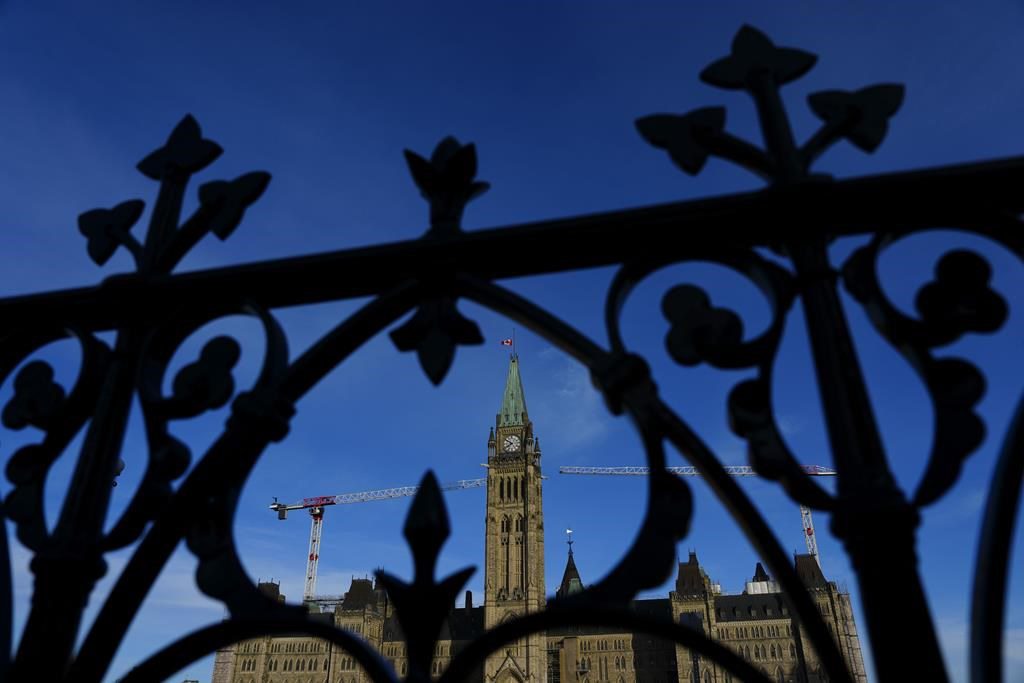
This content is restricted to subscribers
The views, opinions and positions expressed by columnists and contributors are the author’s alone. They do not inherently or expressly reflect the views, opinions and/or positions of our publication.
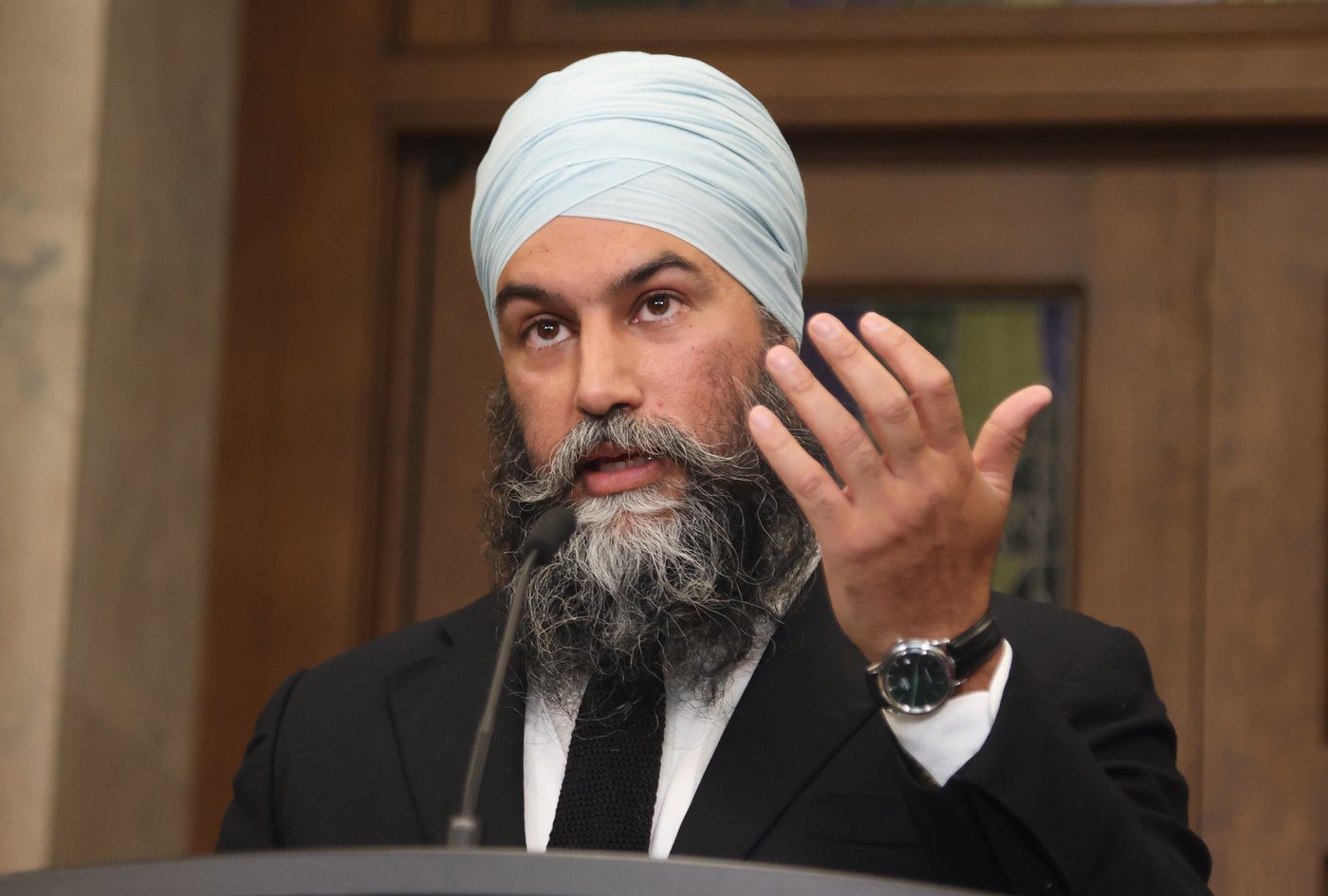
This week, David Moscrop took a look at the state of the NDP for The Walrus and wondered if perhaps Jagmeet Singh’s time is up, and that after the next election the party should start looking for a new leader because of how marginalized the party has become under his stewardship. It’s a good piece and well worth reading, but there are a few holes in the narrative that I think need a bit more exploration to show how the party got to the state it’s in today, after their all-time high of winning 103 seats and forming the Official Opposition in 2011. There are a lot of things that happened during those years that are instructive as to why the party remains stuck at a rump fourth-place result, with more than a quarter of its sitting MPs opting to either not run again or resign early.
One of the things the piece doesn’t really go into is the failure by the party to consolidate any of its gains in 2011. In fact, a certain arrogance settled into the NDP almost immediately, as they kicked long-time Liberals out of their offices in Centre Block, and generally behaved in a manner that lacked any of the kind of graciousness that generally follows an election when MPs shuffle around offices. Question Period temporarily became a back-patting exercise where the Conservative government and NDP opposition congratulated one another for essentially creating a two-party system with “real differences” that could be debated, rather than the mushy-middle Liberals, who were thought to be facing extinction, and where the Elder Pundits declared that they must merge with the NDP if there was to ever be a chance of defeating Stephen Harper and the Conservatives ever again. Of course, that wasn’t true then and it isn’t true now (as some people are already starting the “merger” calls yet again).
What happened in 2011 was something of a fluke, because Quebec as a whole decided to vote emotionally for “Le Bon Jack,” as Jack Layton was touring with his cane, and insisting that he had beaten cancer (when it turns out he hadn’t, and questions remain as to just what he knew about his condition at the time, which his family studiously avoided ever explaining after he died). Prior to that, most of the riding associations in the province existed on paper only, and they had absolutely no grassroots depth. A lot of candidates were only ever paper candidates who signed up to put their name on a ballot for the sheer sake of the party running candidates in every riding so that they could maximize their advertising spend under Elections Canada rules. They never stood for nomination (in spite of the party insisting that they always run open nominations in every riding), and a number of them had never even visited their riding until after they’d won. And yet, they did not feel the need to actually do the work on the ground once they had been elected. Riding associations remained largely on paper, and no real attempt was made to actually build grassroots organizations (though they did feel they needed to stand up a provincial wing of the party, which never really did get off the ground). If anything, the party’s central leadership was being even more rigidly command-and-control as they cooked up the “satellite office” scheme, where MPs had to turn over a portion of their office budgets for these “satellite offices” in the province, which turned out to be contrary to the rules, and why MP Lise St-Denis crossed over to the Liberals when she didn’t want to have any part of it (or the bullying that surrounded the demands).
The other lesson from Thomas Mulcair’s leadership was not just that he tried to move the party further to the centre by dropping references to “socialism” in the party’s constitution, or that he was essentially pledging the same sort of austerity that Stephen Harper was offering, but rather that there was a reluctance to do the actual work. It soon became apparent in the House of Commons that as an opposition party, the NDP were pretty weak and had to rely heavily on staff from the leader’s office to do a lot of the work for them, and as a result, they never developed much in the way of bench strength while they had the opportunity. It was no surprise that their seat count dropped from 103 to 59, with nearly all of their Quebec seats falling away to the Liberals and a resurgent Bloc that had managed to sort out its own leadership woes, and Mulcair tried to coast on his three good days in Question Period during the ClusterDuff that didn’t translate to an ability to perform in the leadership debates.
The lack of desire to do the work has been a hallmark of Singh’s entire leadership, starting from the fact that he couldn’t be bothered to even seek a seat for at least the first year of his leadership before it became clear to him that he had become a non-entity in the media and needed to be visible in the House of Commons. But even before that, there seemed to be this expectation on the part of the party that because he was younger and more progressive than Justin Trudeau, that somehow the progressive voters among the Liberals would just switch over to him because he was so attractive and charming, as though that was all it was going to take.
Meanwhile, since the start of COVID, the party has mostly just been patting themselves on the back for pushing on an open door, whether it was extending pandemic benefits that the Liberals were never going to cut short, or the Supply-and-Confidence Agreement that allows the NDP to try and take credit for things they have done absolutely none of the work to achieve, while Singh tries to play both sides and still talk smack about Trudeau while he votes to prop him up on every occasion. Along the way, they’ve allowed the Conservatives to swoop in and take on their blue-collar base while Singh and the party cater to increasingly niche urban progressive narratives that have a tendency to be alienating to those blue-collar workers who used to vote for the party in a number of regions.
It’s not just the lack of a strategic vision that Moscrop points to, or their failing attempts to recapture the narrative of class politics. It’s the actual grassroots work on the ground that the party can’t get their heads around, which manifests itself in how their ground game has collapsed in successive elections as the Liberals outpaced them. Singh is a problem for the party, but he is only part of the problem, and they need to have a look in the mirror and see the deeper cultural malaise in the organization if they want to have any hope of making future gains.
The views, opinions and positions expressed by columnists and contributors are the author’s alone. They do not inherently or expressly reflect the views, opinions and/or positions of our publication.
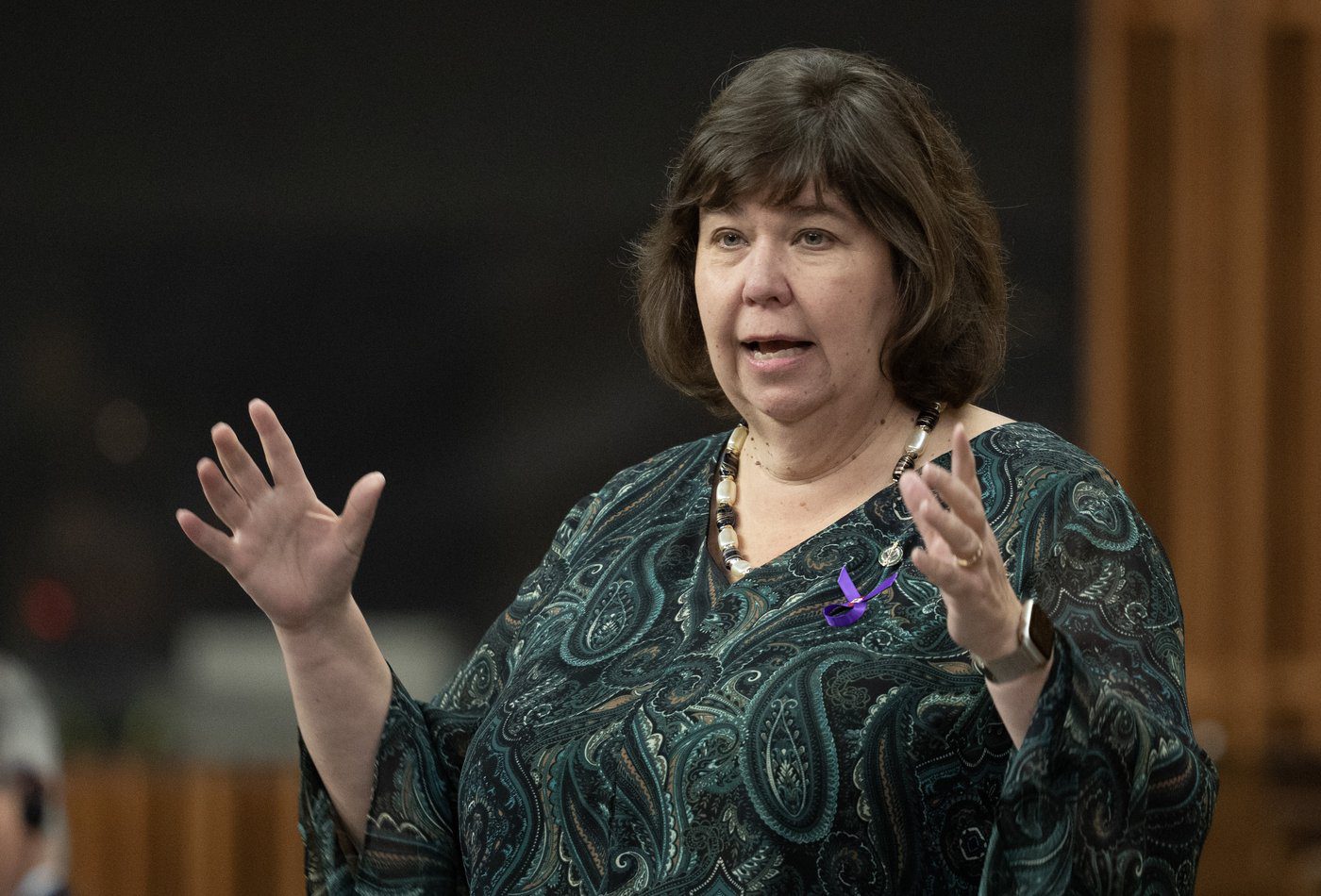
It’s that time of year again, where opposition parties start getting antsy for new means by which they can embarrass the government, and the best way to do that in the dog days of summer is to hold “emergency” committee hearings. If they can get one of the other opposition parties on board, no matter how dubious or indeed ridiculous the premise, then the committee has to recall and a vote be held as to whether or not they’ll hold a full meeting or series of meetings on the subject of the “emergency.” Mercifully, we had very few of those meetings last summer because the Bloc and the NDP were not in the mood to play ball with the Conservatives, but this year, they are starting up once again, in part because of the incentives at play, which are to harvest clips for their social media channels. Gone are the days when committees actually did serious work—everything is now a performance for the cameras.
One of the most important things to note off the top is that the committees in play right now are all those who are chaired by Conservatives. Under the Standing Orders, several committees are automatically chaired by members of the official opposition, and they include the Access to Information, Privacy and Ethics committee, Government Operations and Estimates, Public Accounts, and Status of Women. This is to ensure that for committees with a more pronounced role of scrutinizing the government, that the government’s chair on those committees can’t use their power and influence to sway the studies away from topics that might embarrass the government. Each of those committees are implicated in these summer clip-harvesting exercises, starting with the Ethics committee’s July 17th meeting to conjure up a supposed ethical breach by employment minister Randy Boissonnault where the Ethics Commissioner has already stated that one does not exist.
What garnered a lot of attention was the Status of Women committee meeting last week, where a couple of the witnesses walked out in tears after the meeting derailed, but much of the blame was put on Liberal MP Anita Vandenbeld even though the whole exercise was a set-up from the beginning. The meeting was held under the auspices of “study of testimony related to the committee’s core mandate,” and no opposition party was given the ability to suggest witnesses, as is how things normally happen. And right off the start, these witnesses made their statements and had a round of questions from the Conservatives, before anyone else could object to the circumstances by which said meeting was convened. When she finally got a turn, Vandenbeld noted that they have done several studies already on gender-based violence, and pointed out that the Conservatives abused their position as chair in order to call this meeting in the way they had, which had the effect of playing on the trauma of the witnesses, before moving a motion that they would be better off considering the study on reproductive health that the committee has been sitting on since March 2022.
There is blame to go all around on this, starting with the Chair, Conservative MP Shelby Kramp-Newman, who abused her powers to summon witnesses without the input of any of the other members of the committee, and treating this like an emergency situation. She also sold a false bill of goods to those witnesses, which should be inexcusable. The intent by the Conservatives, as evidenced by a motion that Conservative MP Michelle Ferreri tried to move later in the meeting was to try and tie the Liberals to the (slight) increases in violent crime reported by Statistics Canada in their annual Crime Severity Index report, with the motion that “That the committee hold four more meetings on the impact of violent crime against women.” Clearly this was an attempt to try and catch the Liberals out and get clips of them badgering and hectoring the government about how they are the ones responsible for this increase in violent crime, but the Liberals weren’t about to play ball on that.
Nevertheless, Vandenbeld trying to move the committee back to the reproductive health motion, which is more specifically about ensuring national access to abortion across the country—because yes, there are plenty of places where access is not readily available because of the actions of provincial governments—came across as extremely crass. It’s no secret that the Liberals are trying to jam the Conservatives on the question of abortion rights, particularly given that they hope to capitalize on what happened with Roe v Wade in the US, and such a naked attempt at the committee when trying to avoid the Conservatives’ planned clip-harvesting dog-and-pony show saw not exactly sensitive to the witnesses, no matter that they were present under false pretenses. It’s a very real problem with committees these days that people wind up wasting their time coming in as witnesses only for the committee to devolve into procedural gamesmanship, and this was no different.
There is more of this to come. This week, the Public Accounts committee will be looking into the ArriveCan issue, but more specifically, the Auditor General’s report on it, because that’s the purpose of the Public Accounts committee, and I cannot fathom why this would merit an “emergency” summer meeting outside of the obvious example of this being solely about harvesting clips of Conservative MP Michael Barrett calling the government “corrupt,” and asking about RCMP investigations when that has nothing to do with the Auditor General’s findings—most especially because she didn’t make any findings related to the government in what happened. The week after, the Government Operations Committee is going to be looking into the purchase of the C$9 million Manhattan condo as the new residence for the Consul General in New York, for the sole purpose of performative hairshirt parsimony by all three opposition parties, even though this really isn’t something that this committee should be concerned with.
These committees are supposed to be doing serious work, but the fact that they now solely for the provenance of dog-and-pony shows for the benefit of the cameras is damaging to democracy. We need our MPs to take their jobs seriously, and simply harvesting clips for social media as if they were Millennial wannabe-influencers trying to juice their engagement numbers is not that. If we want to preserve our democracy from the authoritarian populism heading our way, we need to demand better from our MPs.
The views, opinions and positions expressed by columnists and contributors are the author’s alone. They do not inherently or expressly reflect the views, opinions and/or positions of our publication.

NDP leader Jagmeet Singh has been on his usual summer tour, trying to show the flag, insist that he’s still relevant, and on this particular summer, hoping to raise awareness for his candidates in the two upcoming by-elections in Elmwood—Transcona in Manitoba, and LaSalle—Émard—Verdun in Quebec. The former is traditionally an NDP stronghold so there is less cause for concern there, but the NDP are running a known local city councillor in Verdun, which has been a traditionally strong Liberal riding, but after what happened with Toronto—St. Paul’s, the Liberals should not be taking anything for granted, which is possibly why they decided to appoint a hand-picked candidate for the riding rather than go through a nomination race, though that same calculation could bite them in the ass as they alienated some of the local Liberals who had been organizing for such a competition, and who wanted a say in who was going to be on the ballot. Regardless of the by-elections, Singh has a lot to prove this summer, but we’ll see how much of it is able to penetrate.
Part of the summer tour has been a process of making announcements of things that he is trying to push the government to do, but they have not exactly been very well thought-out or even feasible. For one, Singh is demanding price caps on certain grocery items while he rails about grocery CEOs, completely ignoring that the prices for groceries have been impacted largely by global factors—the largest has been climate changes, as droughts impact food-producing regions, in Canada and abroad, with a few floods or hurricanes thrown in for good measure, and the lasting impacts of Russia’s invasion of Ukraine that has hurt global wheat and cooking oil markets. The profit margins of grocery chains have remained stable throughout the recent bout in inflation, and while said grocery chains are not blameless for prices, they are not the cause. In addition, talking about price caps as inflation is back down to the control range is nonsense economics, not that wage and price controls ever really made sense, nor did they last work in the 1970s when they were introduced. But hey, I guess “Zap, you’re frozen!” was due to make a comeback at some point.
Singh is also trying to insert himself into the housing debate, fully ignoring that this is almost entirely provincial jurisdiction. This week he was talking about federal measures to curb “renovictions,” where landlords will evict long-term tenants under the rubric of needing to do renovations so that they can then increase rental prices. Singh put the blame for this entirely on “corporate landlords,” which is a reach, and then promised “federal incentives” to “force municipal legislation” to ban the practice, even though it’s actually the provincial governments who control landlord-tenant legislation. The very notion that federal “incentives” can force municipalities to do anything is pretty risible, considering that even the Housing Accelerator money the federal government is currently offering can’t even stop certain cities from hiking their development charges because they think they’ll bring in more money from them than they would get from the feds. The fact that Hamilton brought in renoviction measures locally is hardly indicative that this would or could even work in other cities, and this has a whiff of Singh trying to pump the tires of its mayor, Andrea Horwath, because she was his leader when he was an Ontario MPP, never mind that she was possibly the most useless party leader in recent memory. (I should mention that the Liberals also promised federal action to stop “renovictions” in their last platform, but never spelled out what those measures were, and they seem to have disappeared from their agenda).
Singh’s line that both the Liberals and Conservatives made housing unaffordable not only ignores the broader societal factors—that housing is treated as an investment vehicle for retirement, creating the incentives to constrain supply in order to drive up property values—but it also conveniently turns a blind eye to all of the provinces who had NDP governments that also did little to improve affordability, even at a time when it was not as outrageously bad as it is currently, particularly given that housing is largely a provincial responsibility. Oh, but that doesn’t fit his simplistic narratives, where everything is the fault of corporate villains, and the NDP’s class warriors will set everything right solely through the application of political willpower—just as soon as they get access to that Green Lantern Ring hidden in the PMO.
If anything, this looks a lot like desperate promises made by a floundering leader who is in trouble, not coincidentally because more than a quarter of his caucus has announced that they are either not running again in the next election, or have already left. His attempts to sound tough about the Liberals and their record fall flat because his party are in an agreement to prop them up until the next scheduled federal election, and while he is getting parts of his agenda accomplished as a result of said agreement, his attempts to take ownership of them are also falling flat because he and his caucus have done literally none of the work, and have largely been patting themselves on the back for pushing on an open door, and a lot of voters can see that.
The polling has also borne out an unusual phenomenon that the NDP vote hasn’t risen while the Liberals have taken a beating, and it’s hard not to put much of the blame for that on Singh, whether it has been his inability to connect with an audience, his alienation of the working-class voter that used to be competitive in a number of ridings, or his refusal to understand what his own job is. Most of the time, Singh appears to be gunning for Doug Ford’s job rather than Justin Trudeau’s, and perhaps it’s time that he just owns up to it and return to the arena of provincial politics where he started, lest he alienate even more of his own caucus, lose even more voters, and continue to take up space in federal politics, fighting on provincial issues.
The views, opinions and positions expressed by columnists and contributors are the author’s alone. They do not inherently or expressly reflect the views, opinions and/or positions of our publication.
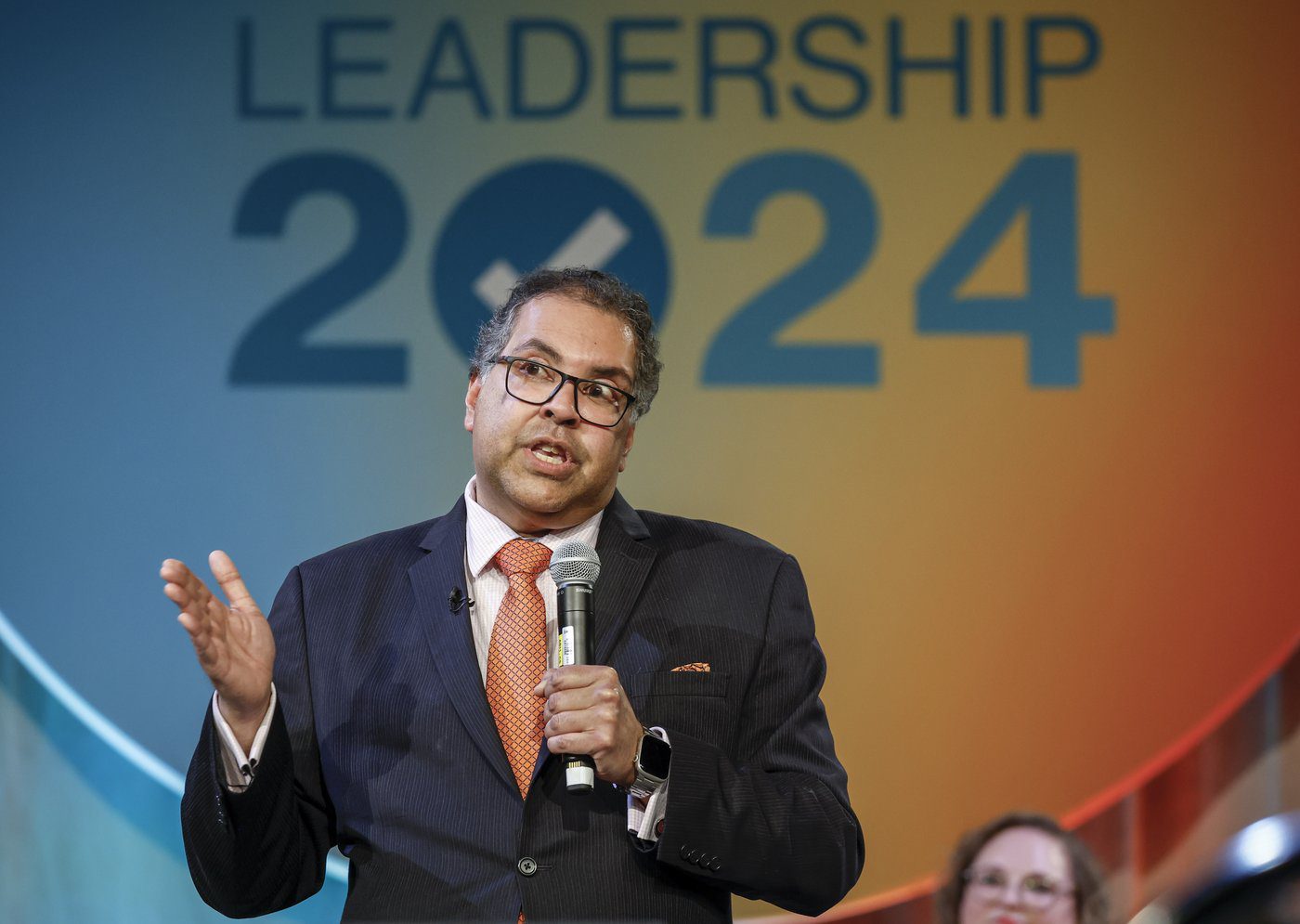
This content is restricted to subscribers
The views, opinions and positions expressed by columnists and contributors are the author’s alone. They do not inherently or expressly reflect the views, opinions and/or positions of our publication.